This New Year, Make Some Bookish Resolutions

This year, we challenge you to read intentionally. Not sure how to go about that? We've rounded up suggestions for reading resolutions that will help you make 2024 a year for the books. These tips can be applicable to you or any children in your life. They might even be goals you can work on as a family in 2024.
Setting a numbered goal may or may not help your motivation to read.
Your first instinct when considering reading resolutions might be to set a specific number of books you intend to read over the course of the year. Be careful with this. Contrary to what you may have heard, setting a numbered goal (like 12 books a year or 1 chapter a day) can be detrimental to your motivation. If you do set a goal, allow it to be flexible throughout the year, depending on how much time life is allowing you for reading. Reading should be an enjoyable and relaxing pastime, so do not set any challenges that will take away your enjoyment!
If you are the type of person who is positively motivated by a goal, there are options. You may set a small goal for yourself, like reading one chapter a day, or set a larger goal, like a certain number of books each year. You can use an app like Goodreads or Storygraph to track your progress on these goals.
To reiterate: if setting a numbered goal feels stifling, like you’re putting too much pressure on yourself, make a resolution to stop worrying about your reading stats. In our book (pun intended), any amount of reading is an awesome success!
Keep a reading journal.
Keeping a reading journal can be a relaxing, reflective experience that will leave you with a satisfying look at everything you've read. A reading journal can contain whatever items you want to remember: a book with a collage of images and words that portray the plot, atmosphere, and characters, or a simple list of favorite quotes. You might also want to write down your thoughts as you read and after you've completed the book. A reading journal doesn't even have to be a physical journal; you could use the Notes app on your phone or download digital journal pages that can be filled out on a tablet.
Use Pinterest or Instagram to search for inspiration regarding your reading journal. At the end of the year, or at the end of the journal, this bundle of pages will be a personal recollection of the books that filled your life.
Allow yourself to DNF!
DNF, pronounced D N F, (verb), is an acronym for “did not finish”. Example: “I started the book with high hopes, but in the end, it was so boring I had to DNF.”
This is for everyone out there who stubbornly insists on finishing a book they’re dreading every page of. Repeat after me: there is no reason to force yourself to finish a book you aren’t enjoying. The quicker you put down an unenjoyable book, the more quickly you can pick up something enjoyable that doesn’t feel like an extension of your work day. If you’re having trouble deciding whether to DNF or not, put the book down for a few days to take a break from it. If you are dreading picking it up again, or you pick it up, and you’re still not having a good time, say goodbye to that book.
Don’t be afraid to try new formats of books.
If you are among the crowd that stubbornly refuses to part with the solid feel and warm, papery smell of a physical book, we librarians understand! We became librarians because we love looking at rows of shelves filled with books. But also, being librarians means we love anything that makes reading more accessible. People who have checked out audiobook CDs for road trips understand how wonderful it is to be able to fill that expanse of time with a good story. And have you ever (fantasy readers, I’m talking to you) been reading a huge doorstop-sized book and wished you could carry it more easily in your purse or pocket? The Libby app allows library patrons to electronically check out not only audiobooks, but also e-books and even magazines that can be read on smart devices or e-readers, which can store thousands of books. No, the electronic format doesn’t include the wonderful feel of a book’s pages or that crisp new-book smell, but you’re trading aesthetic for practicality. And if you do want to shoot for a higher reading goal this year, ebooks and audiobooks may help you meet this goal by allowing you to read in situations you normally wouldn’t be able to.
Read diversely.
For most of us, including me, it’s easy to pick up books about characters who have similar backgrounds and experiences to us. If you’re white, heterosexual, and not physically or mentally handicapped, chances are that most of the books sitting on your shelves are about (or written by) a person who shares those characteristics. If you fit these characteristics, you probably don’t even notice the consistency as you pick out your books. It's normal not to consider the background of characters or the background of the author of a book while you're choosing reading material. But reading is one of the easiest ways to gain empathy and become closer to the people in your community, especially if you’re reading a book by a diverse author. Art is a mirror to the soul, and literature is no exception to that. Read a book about someone who experiences life differently than you do, whether it’s because of their skin color, physical or mental ability, religion, position in society, etcetera. Here are some recommendations for books written by diverse authors:
- Chain-Gang All-Stars by Nana Kwame Adjei-Brenyah
- The Vanishing Half by Brit Bennett
- We Hunt the Flame by Hafsah Faizal
- Gods of Want by K-Ming Chang
- Pachinko by Min Jin Lee
- Patsy by Nichole Dennis-Brown
Read outside your comfort zone.
Reading diversely might overlap with this challenge. If you’ve been reading for a number of years already, presumably you have a favorite genre that you like to stick with. I’m asking you to step outside your comfort zone and try some of the best books of your unexplored genres. I’ve compiled a list of recommendations from a few different genres. If you are wanting to try a genre that you don’t see in my list, or looking for children's titles, feel free to ask a librarian for a recommendation.
Picking a book that you wouldn’t normally read is a nerve-wracking experience. It’s a bit like visiting a new country with a different manner of speaking, new customs, and history. Reading outside your comfort zone will have you experiencing all these things within each genre. For example, pick up a graphic novel to see how authors and illustrators manipulate the art of language, telling a story with more than just words. The graphic novel is a relatively new genre that is redefining literature. The visual component of graphic novels have made them an especially powerful vehicle to tell cultural stories, and the last three selections here blend genres by being graphic memoirs.
- The Sandman, by Neil Gaiman
- The Magic Fish, by Trung Le Ngyuen
- Maus, by Art Spiegelman
- American Born Chinese, by Gene Luen Yang
Next, if you’re like me and are a little scared of non-fiction because it feels a little too close to the textbooks you felt mentally abused by in high school or college- take a deep breath and look at the list I’ve compiled below. These books illuminate topics in a well-researched, yet easy-going manner that will intrigue you as much as your favorite novel does.
- The Immortal Life of Henrietta Lacks, by Rebecca Skloot
- All About Love: New Visions, by Bell Hooks
- An Immense World: How Animal Senses Reveal the World Around Us, by Ed Young
- The Splendid and the Vile, by Erik Larson
Memoirs are a facet of the literary world that I have just begun to step my toes into, and it’s clear that an immense amount of empathy and knowledge can be gained from just a single person’s story. From a man’s remembrance of his childhood in South Africa, to a Korean-American woman’s reckoning with losing her mother while trying to make ends meet working at a restaurant, these glimpses into true life stories will surely be memorable reads.
- Know My Name, by Chanel Miller
- Persepolis, by Marjane Satrapi
- Crying in H Mart, by Michelle Zauner
- Born a Crime: Stories from a South African Childhood, by Trevor Noah
- In The Dream House, by Carmen Maria Machado
Lastly, I need to plug a genre that is one of my favorites- horror. Filmmaker John Carpenter explains the horror genre well-
"It [the horror genre] never dies. It just keeps getting reinvented and it always will. Horror is a universal language; we're all afraid. We're born afraid, we're all afraid of things: death, disfigurement, loss of a loved one. Everything that I'm afraid of, you're afraid of and vice versa. So everybody feels fear and suspense."
These stories speak to everyone on a visceral level, using real or metaphorical terrors to draw on our innermost fears. If you’re an adrenaline junkie who doesn’t want to risk injury, try these books to ease into the horror genre:
- The Trees Grew Because I Bled There: Collected Stories, by Eric LaRocca
- The Haunting of Hill House, by Shirley Jackson
- The Last House on Needless Street, by Catriona Ward
- My Best Friend’s Exorcism, by Grady Hendrix
- The Stepford Wives, by Ira Levin
If you never step outside of your literary comfort zone, you’re missing out on thousands of amazing stories, some of which could be your new favorites.
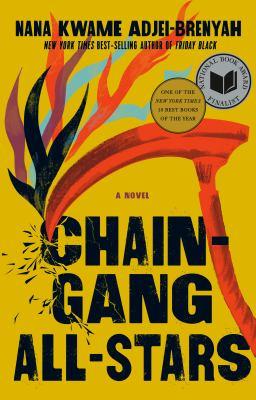
Chain-Gang All-Stars by Nana Kwame Adjei-Brenyah
"Two top women gladiators fight for their freedom within a depraved private prison system not so far-removed from America’s own in this explosive, hotly-anticipated debut novel from the New York Times bestselling author of Friday Black • LONGLISTED FOR THE ANDREW CARNEGIE MEDAL FOR EXCELLENCE." -Google Books
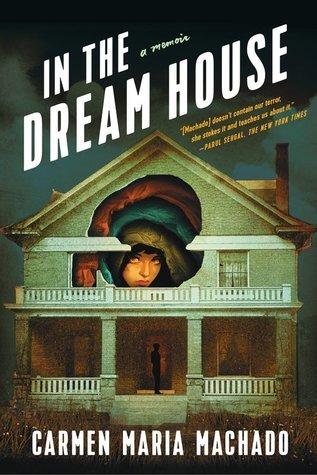
In the Dream House: A Memoir by Carmen Maria Machado
"For years Carmen Maria Machado has struggled to articulate her experiences in an abusive same-sex relationship. In this extraordinarily candid and radically inventive memoir, Machado tackles a dark and difficult subject with wit, inventiveness and an inquiring spirit, as she uses a series of narrative tropes—including classic horror themes—to create an entirely unique piece of work which is destined to become an instant classic." -Goodreads
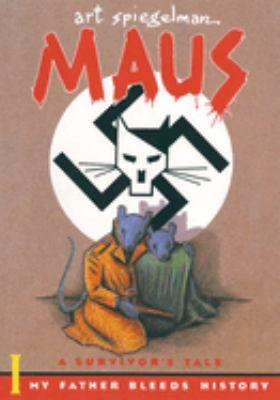
Maus I: A Survivor's Tale: My Father Bleeds History by Art Spiegelman
"Maus, often published as Maus: A Survivor's Tale, is a graphic novel by American cartoonist Art Spiegelman, serialized from 1980 to 1991. It depicts Spiegelman interviewing his father about his experiences as a Polish Jew and Holocaust survivor." -Google Books
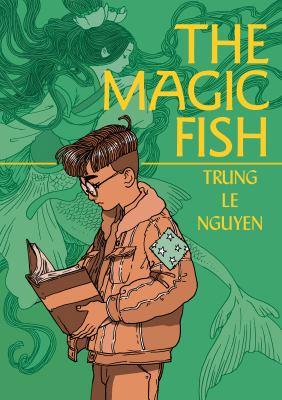
The Magic Fish by Trung Le Nguyen
"The Magic Fish is a semi-autobiographical graphic novel written and illustrated by Trung Le Nguyen. The novel tells the story of Tiến Phong, a second generation American Vietnamese teenager, who helps his mother learn English through fairy tales while struggling to tell her about his sexuality." -Google Books
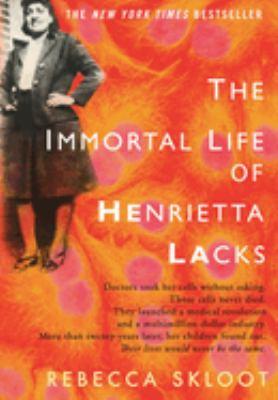
The Immortal Life of Henrietta Lacks by Rebecca Skloot
"Her name was Henrietta Lacks, but scientists know her as HeLa. She was a poor Southern tobacco farmer who worked the same land as her enslaved ancestors, yet her cells—taken without her knowledge—became one of the most important tools in medicine. The first “immortal” human cells grown in culture, they are still alive today, though she has been dead for more than sixty years. If you could pile all HeLa cells ever grown onto a scale, they’d weigh more than 50 million metric tons—as much as a hundred Empire State Buildings. HeLa cells were vital for developing the polio vaccine; uncovered secrets of cancer, viruses, and the atom bomb’s effects; helped lead to important advances like in vitro fertilization, cloning, and gene mapping; and have been bought and sold by the billions.
Yet Henrietta Lacks remains virtually unknown, buried in an unmarked grave.
Now Rebecca Skloot takes us on an extraordinary journey, from the “colored” ward of Johns Hopkins Hospital in the 1950s to stark white laboratories with freezers full of HeLa cells; from Henrietta’s small, dying hometown of Clover, Virginia — a land of wooden quarters for enslaved people, faith healings, and voodoo — to East Baltimore today, where her children and grandchildren live and struggle with the legacy of her cells." -Goodreads
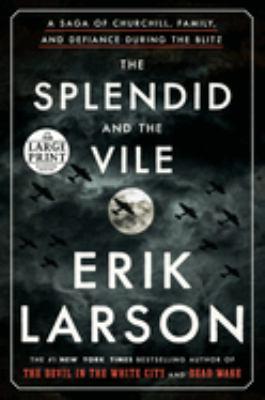
The Splendid and the Vile: A Saga of Churchill, Family, and Defiance During the Blitz by Erik Larson
"In The Splendid and the Vile, Erik Larson shows how Churchill taught the British people "the art of being fearless." It is a story of political brinkmanship, but it's also an intimate domestic drama, set against the backdrop of Churchill's prime-ministerial country home, Chequers; his wartime retreat, Ditchley, where he and his entourage go when the moon is brightest and the bombing threat is highest; and of course 10 Downing Street in London. Drawing on diaries, original archival documents, and once-secret intelligence reports--some released only recently--Larson provides a new lens on London's darkest year through the day-to-day experience of Churchill and his family: his wife, Clementine; their youngest daughter, Mary, who chafes against her parents' wartime protectiveness; their son, Randolph, and his beautiful, unhappy wife, Pamela; Pamela's illicit lover, a dashing American emissary; and the advisers in Churchill's "Secret Circle," to whom he turns in the hardest moments." -Goodreads
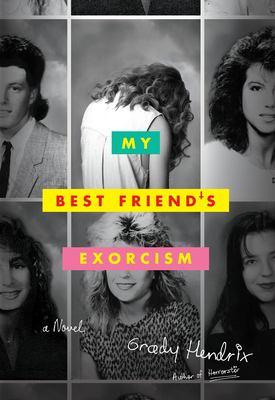
My Best Friend's Exorcism by Grady Hendrix
"The year is 1988. High school sophomores Abby and Gretchen have been best friends since fourth grade. But after an evening of skinny-dipping goes disastrously wrong, Gretchen begins to act…different. She’s moody. She’s irritable. And bizarre incidents keep happening whenever she’s nearby. Abby’s investigation leads her to some startling discoveries—and by the time their story reaches its terrifying conclusion, the fate of Abby and Gretchen will be determined by a single question: Is their friendship powerful enough to beat the devil?" -Amazon
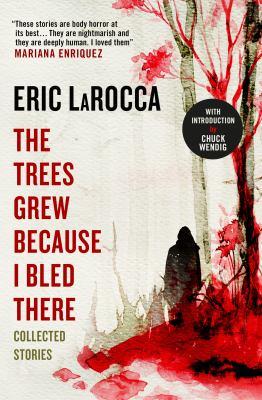
The Trees Grew Because I Bled There by Eric LaRocca
"Eight stories of literary dark fiction from a master storyteller. Exploring the shadow side of love, these are tales of grief, obsession, control. Intricate examinations of trauma and tragedy in raw, poetic prose. In these narratives, a woman imagines horrific scenarios whilst caring for her infant niece; on-line posts chronicle a cancer diagnosis; a couple in the park with their small child encounter a stranger with horrific consequences; a toxic relationship reaches a terrifying resolution…
Originally published under the title The Strange Thing We Become and Other Dark Tales, this is a much-praised collection of deeply unsettling, painfully dark tales." -Goodreads